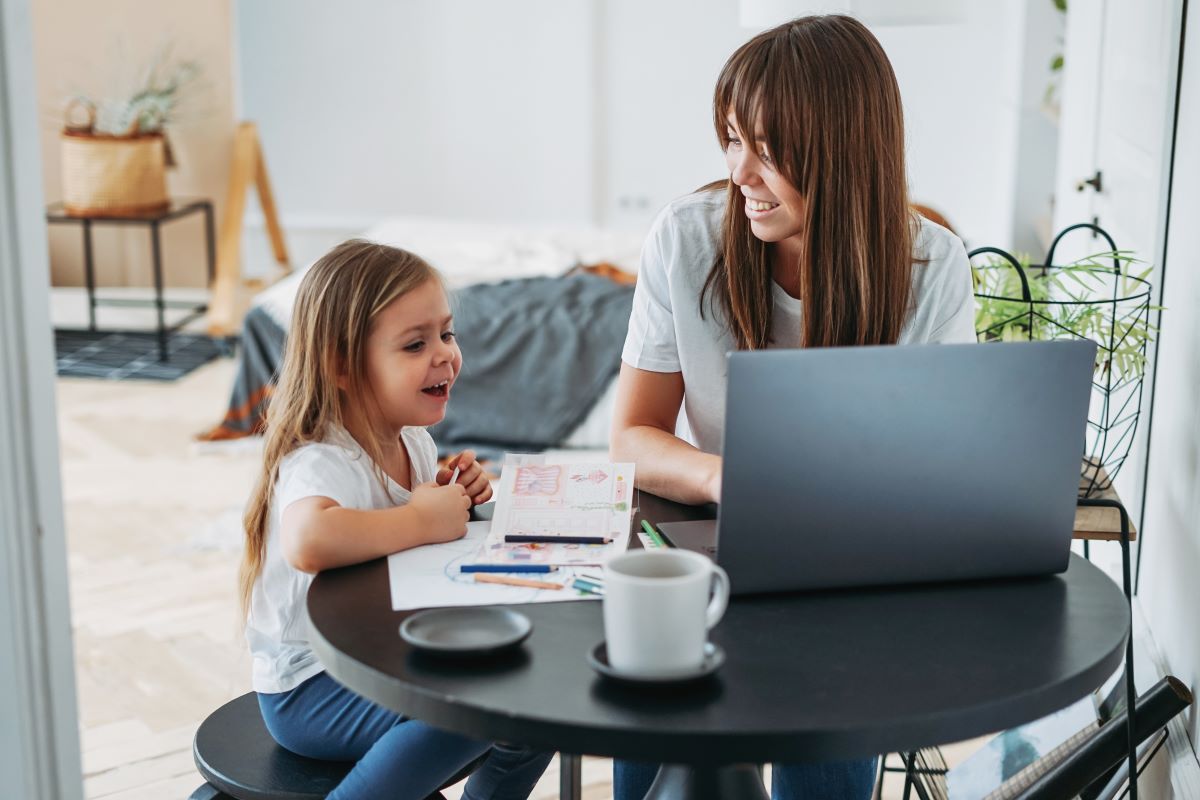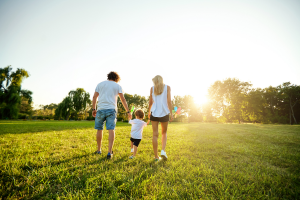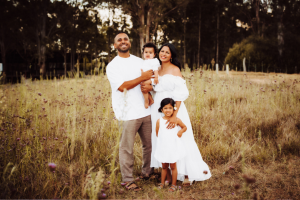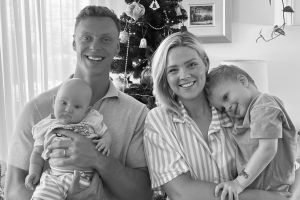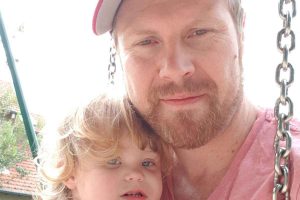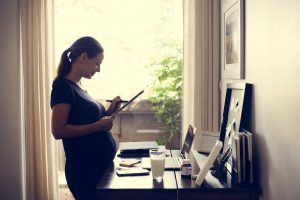What are you modelling for your children in the COVID-19 pandemic? What is the pandemic teaching you about your own mental health?
While we may be in different phases of dealing with this crisis mentally and emotionally depending on where we are in the world, for working parents, many of the factors that are fuelling our stress and anxiety are the same. So too are the techniques we can apply to help us cope.
With the benefit of hindsight, management consultant and mum Fiona Wilhelm shares five key lessons that will help her family thrive through a second round of lockdown and beyond.
While many people said they slowed down during the first COVID lockdown in Australia, I could not relate to this at all. Working in consulting, my workload doubled: we scrambled to find new ways to collaborate, which turned out to be more time-consuming and exhausting than face-to-face communications. I was exhausted at the end of each day.
So, I’m not going to lie about how I felt when it was announced on 7 July 2020 that we had to go back into lockdown in Victoria – the only state in Australia to be hit by a second round of restrictions. A sick panic came over me. A claustrophobic anxiety laden with memories of juggling work, late nights printing out school worksheets to try to ‘buy’ some peace to focus on work the next day. An endless cycle of ‘trying’ to do one thing whilst fending off remote learning. It felt like trying to write an urgent press release whilst fending off a hungry lion with a chair!
Much like the animal tamer analogy, working in an old-fashioned zoo, the world and the expectations we have of it have been reshaped. What is emerging is the overused phrase the ‘new normal’, and with it new opportunities and new ways of looking at things. The education of our children is one of these ‘things’, and the part we play as their primary educator has been refreshed.
As we settle into a second bout of remote learning, I’ve distilled my reflections from the first round of lockdown remote learning into five lessons.
1. Notice your behaviour
This might not be news to you, but our children are imitating us. Yes, it’s true. I bet you can name one thing your parents did that you said you’d never do, and you do it to your kids (and you don’t like yourself for it). It’s muscle memory! We can’t help ourselves. So when COVID hit, we did whatever came as muscle memory to us.
For many, we resisted the change. We agonised over all the things we couldn’t do. We felt trapped and blocked. We longed for the familiar ‘normal’ life we were used to. This is a lesson in change and how we deal with it, and it affects how our kids deal with it.
In the first lockdown, I was plagued by anxiety – as soon as I’d get a schedule going, another change would come and bomb my plans. I was trying to control the outcome. I can admit now that this caused my own suffering. If I’d just let go of trying to control the outcome, it would have been better for everyone.
2. Inject mindfulness into your day
It’s hard to admit that remote learning was hell because I made it that way. I dropped my daily meditations and mindful walks in favour of just pushing through. I didn’t stop and assess the choices that were really in front of me, e.g:
Option 1. Don’t do remote learning; or
Option 2. Do two hours of remote learning a day and then go out for a walk; or
Option 3. Create your own version of what works for you.
None of those choices seemed apparent in that moment. This is why mindfulness is so important – it helps us to ‘be’ with a problem, rather than attacking it with a baseball bat. Our human nature wants to go straight to the solution and tick it off the list, but this is often the wrong answer.
3. Don’t judge yourself – Find the way that’s right for YOU
Like any change in life, we might at first try to ‘fit in’ and do what everyone else is doing. In many cases, this is going against our core values, and so, after much discomfort, we have to walk away from fitting in. So, I thought to myself: What if I used mindfulness to my advantage in remote learning?
Around the time I asked myself that question, I found myself in a local bookshop where I stumbled across Hugh van Cuylenburg’s book The Resilience Project. Hugh examines the key traits and behaviours possessed by happy people: gratitude, empathy and mindfulness. Reading this was a revelation – I could build my own curriculum! One that encompassed the tools that my daughter could harness at school and in her life far beyond school – the resilience tools I wished I’d possessed at age six to deal with the change as I transferred schools from Auckland, NZ, to Moshi in Tanzania in East Africa.
4. It’s not healthy to be a Netflix parent
I’m not talking about screen time here! Before COVID, I hadn’t realised how much I had positioned myself as the provider of all things to my child – from fun and money to entertainment. I was basically Netflix: whatever she wanted she could switch it right on at will. This meant my daughter was missing the opportunity to be self-reliant, be on her own and ‘get on’ with things in the remote learning scenario, which drove me absolutely bonkers.
While work dialled up with VCs 30 minutes back-to-back, my daughter would pop in about every 30 minutes to ask, “What does this mean?” Or, “I’m finished, can you look?” Stopping this behavior or reliance on me started with a change in my behaviour. I simply stopped trying to fix everything and invited her to do things herself.
5. Give yourself time
I’ve taken time away from work to really focus on my version of remote learning and get the routine down. I’m mindful that this is a chance that doesn’t come often in life and I’m going to take it with both hands.
I’m reminded of my dear friend, who lived through years of her daughters’ suffering from an eating disorder. At 14, her daughter was in and out of hospital, which meant not attending school for a whole year. My friend reminds me regularly, “I don’t know what all these people are worried about with remote learning. Their kids are alive and they’re thriving. If it’s too hard, don’t do it! If your kids are suffering because you’re suffering, they can’t learn anyway.”
In summary, in COVID let’s look at what we have – our kids are alive, they can thrive and so can we.
Written by Fiona Wilhelm. Fiona is the solutions lead at KPMG where she helps teams to recognise the potential to innovate and grow products in response to market changes. She is an advocate for parents at work and women in leadership. Fiona is a board director for Splendour Life, and is currently authoring a book on how to pivot after redundancy. When not at work, you can find her cycling or spending time with her husband and seven-year-old daughter.

